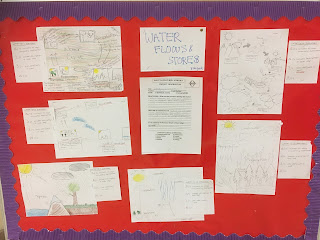Ms. Kempf's students in 3rd grade Math demonstrated an understanding of geometry by applying it to a real-world task of creating a floor plan.
Ms. McCord's students created a model to apply a concept in preparation for the MAP test.
Essays composed by Ms. Smith's students are posted in the hallway with a descriptive feedback post-it note for each student.
Ms. Latta's students practiced the skill of visualization by drawing an image of what they read in a passage and explaining their drawing.
Ms. Benjamin posts the student achievement on reteaching objectives in her classroom as a reminder of what students are working towards for MAP.
To practice using text features, Ms. Wolfenden's students drew a diagram of their hand and added labels.
Ms. Connell's class created an alphabet book with each student creating a page of the book for letters A-Z.
Throughout the year, Ms. Walker and Ms. Stuckel have introduced Pre-K students to letters. This is the latest project which demonstrates students' learning of the letter U.
Ms. Archer's students practiced finding the mean, median, mode, and range by using real-world story problems.
Ms. Jones created anchor charts to help students interpret scatterplots in Math.
Ms. Cychowski's students demonstrated learning of the water cycle by creating a diagram and explaining their work.















































